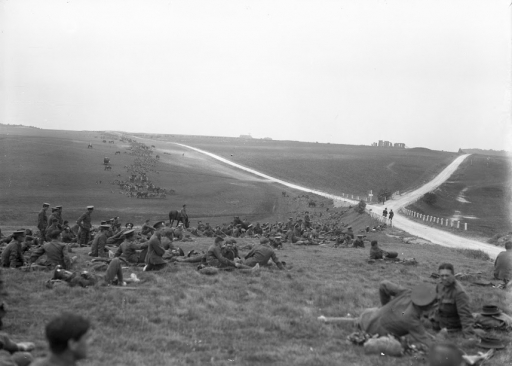English Heritage opened a special exhibition at Stonehenge on November 5th 2014, telling the story of how a million men from Britain and the Commonwealth trained for the First World War near this prehistoric site.
Stonehenge stood at the heart of the world’s largest military training camp during the war, with 180,000 soldiers based there at any one time.
Robert Campbell, Head of Interpretation at English Heritage, explains: “Troops from across the British Empire travelled to the Salisbury Plains to prepare for war starting with Canadian soldiers in 1914, followed by men of the Australian and New Zealand Army Corps (ANZACs) in 1916.”
With personal stories, photographs and original objects drawn from a range of museums and private, local and national collections, ‘Soldiers at Stonehenge – Salisbury Plain and the journey to the First World War’ explores what life was like for the men stationed there.

Canadian 10th Battalion pass Stonehenge (Photo: Glenbow Museum)
Highlights include original artwork of ‘The Better ‘Ole’ – one of the most famous war cartoons of all time. It was on Salisbury Plain that its creator, Bruce Bairnsfather, developed his humorous series of cartoons about life in the trenches.
Also on display are medals awarded to Lieutenant Edmund Antrobus, the heir to Stonehenge, who was killed in action at the Battle of Ypres in October 1914, just seventeen days after arriving at the front.
His father Sir Edmund Antrobus, who’d inherited the Stonehenge site in 1899, died in in February 1915; it was said of a broken heart.
The exhibition also reveals how reminders of the First World War military presence can still be seen in the wider landscape around Stonehenge.
English Heritage’s Robert Campbell says: “The task of the men training on Salisbury Plain was to overcome the horrific stalemate of trench warfare. To replicate conditions on the Western Front, soldiers dug intricate networks of trenches which were then pounded by shellfire.
“Innovative but deadly new technology pioneered in the training camps and secret establishments created in Wiltshire during 1914 – 1918 resulted in major developments in aviation, artillery and chemical warfare.”
‘Soldiers at Stonehenge – Salisbury Plain and the journey to the First World War’ can be seen at Stonehenge exhibition and visitor centre, near Amesbury in Wiltshire, until mid-April 2015. Admission is included in the entry price for Stonehenge. More details can be found here.
Source: English Heritage
Images courtesy of T.L. Fuller © J.T. Fuller (Stonehenge & Salisbury Plain); Glenbow Museum (Canadian 10th Battalion)
Posted by: Peter Alhadeff, Centenary News
